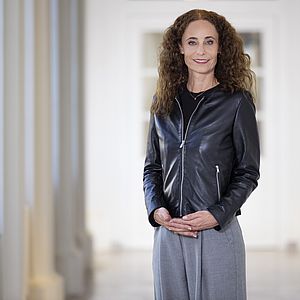Franz Mair
This is the story of Franz Mair. He was a resistance fighter, was shot near the Landhaus and died from his wound. Immediately after 1945, his memory dominated official remembrance of the Nazi era.
Franz Mair was born in Niederndorf near Kufstein in 1910. He became a teacher of German and English and taught at the Akademisches Gymnasium in Innsbruck from the 1938/39 school year. He was extremely popular with his students and had a formative influence on them. He regularly invited them to his home, where the interaction was strong. This was the setting for the emergence of a resistance group against the Nazi regime from 1940 onwards. Mair spoke openly against National Socialism.
During the liberation of Innsbruck in May 1945, Mair was involved in the last armed clashes in the city and was seriously wounded. He died one day after the surrender of the local Wehrmacht units on 6 May 1945.
Mair’s senseless death shortly before the end of the war was instrumentalised by the Tyrolean post-war government in its portrayal of Tyrol as a victim of National Socialism. As part of the liberation celebrations held one year after the end of the war, a commemorative plaque for Mair was unveiled on the Old Landhaus. In the official narrative, the fighting in which Mair was involved occurred in front of the building, although it really took place at some distance from it. This established a direct association between the seat of government in the Altes Landhaus and liberation and resistance.
After the withdrawal of the French occupying forces in 1955, less and less emphasis was placed on the subject of resistance. The focus of remembrance shifted to commemoration of the fallen soldiers of the Wehrmacht. The Tyrolean government even had the memorial plaque for Mair removed for a short time when German tourists complained about the text. In 2011, Mair’s name was included on the side of the Liberation Monument on Landhausplatz.








